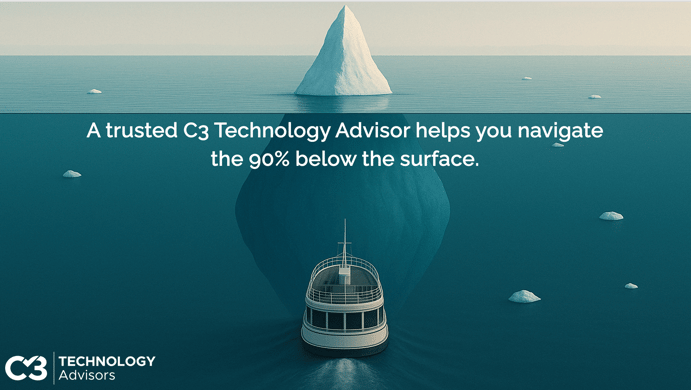Buying technology has never been more complicated, or risky, than it is today. The pace of innovation is staggering. New solutions flood the market daily. Supplier options are multiplying exponentially. Should we go with “best of breed” or a “single vendor solution?” And while there's more information available than ever before, it’s often overwhelming, biased, or outdated.
Even more challenging? Many companies head into buying cycles without a crystal-clear understanding of what they’re actually trying to solve. Add limited time, limited resources, and mounting pressure to get it right, and it’s no surprise that the technology buying process can feel like a gamble.
It doesn’t have to be. But it does require knowing the differences between your buying options, and picking the right one.

Buying Direct: What You Need to Know
Pros:
- Some direct sales reps and engineers are outstanding — technically skilled, customer-focused, and genuinely trustworthy.
- Many of the best projects completed by suppliers actually originate through trusted advisors who then work with these top reps behind the scenes.
Cons:
- Direct sales reps have monthly or quarterly quotas to hit. Their job is to convince you their solution is the best, even when it’s not.
- If their product isn’t the right fit, they may simply walk away, leaving you back at square one.
- You’re stuck evaluating just one option — theirs.
- After you sign with a vendor or project closes, you’re often handed off to an account manager, losing continuity of experience.
What It Really Costs to Evaluate Vendors Internally
Every vendor you evaluate internally requires a significant time investment:
-1.png?width=2240&height=1552&name=Heading%20(4)-1.png)
If you’re running a formal RFP process, add another 29+ hours for internal discovery, documentation, and demo rounds.
And even after all that effort, there’s still information you may not get:
- Actual staffing levels and service quality for professional services
- Honest capabilities (and realities) of a vendor’s product roadmap
- True pricing concessions
- Full legal protections

A Better Way to Buy: The Trusted Advisor Model
Pros:
- A true trusted advisor acts like a fiduciary — putting your interests first, always.
- Their success depends on your long-term satisfaction.
- Customers don’t pay for trusted advisor services — the supplier you select covers it. They provide the data, you make the decision.
- Trusted advisors negotiate better legal terms, provide engineering and project management support, and offer unbiased, real-time supplier data:
- Price benchmarking
- Recent professional services performance
- Real-world delivery outcomes
- Their model only works if you’re happy for the long haul.
Cons:
- None. (Really.)
Conclusion: The Right Partner Changes Everything
When it comes to buying technology, you have options, just like when you invest in the stock market. You can go direct. You can use a broker. Or you can partner with a trusted advisor who puts your long-term success first.
At C3 Technology Advisors, we act in your best interest at every turn — guiding you to the best solution, minimizing risk, protecting your investment, and ensuring you're set up for success, today and tomorrow.
How you buy can change everything.

-1.png?width=376&name=Heading%20(2)-1.png)




